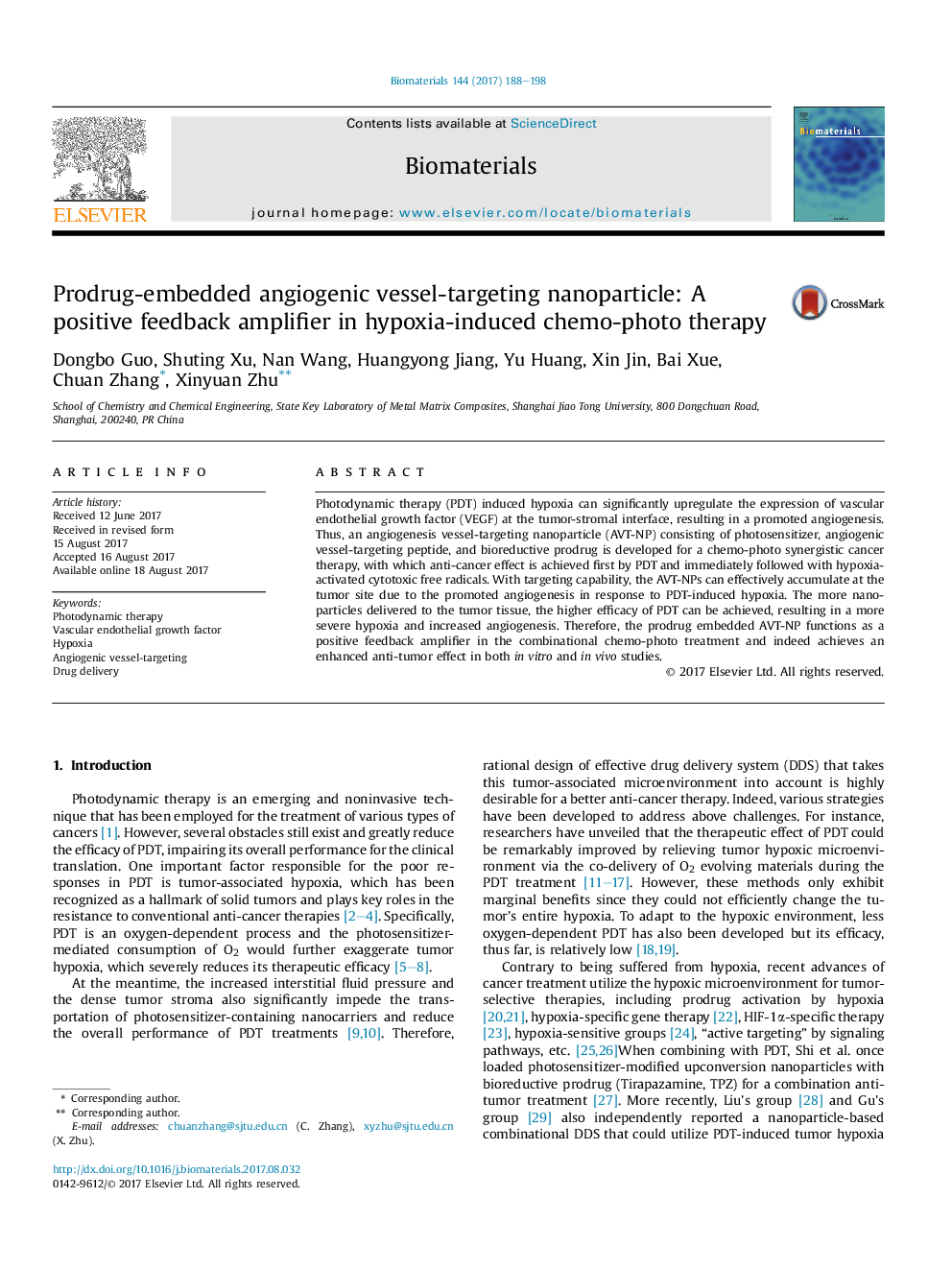| Article ID | Journal | Published Year | Pages | File Type |
|---|---|---|---|---|
| 4752260 | Biomaterials | 2017 | 11 Pages |
Photodynamic therapy (PDT) induced hypoxia can significantly upregulate the expression of vascular endothelial growth factor (VEGF) at the tumor-stromal interface, resulting in a promoted angiogenesis. Thus, an angiogenesis vessel-targeting nanoparticle (AVT-NP) consisting of photosensitizer, angiogenic vessel-targeting peptide, and bioreductive prodrug is developed for a chemo-photo synergistic cancer therapy, with which anti-cancer effect is achieved first by PDT and immediately followed with hypoxia-activated cytotoxic free radicals. With targeting capability, the AVT-NPs can effectively accumulate at the tumor site due to the promoted angiogenesis in response to PDT-induced hypoxia. The more nanoparticles delivered to the tumor tissue, the higher efficacy of PDT can be achieved, resulting in a more severe hypoxia and increased angiogenesis. Therefore, the prodrug embedded AVT-NP functions as a positive feedback amplifier in the combinational chemo-photo treatment and indeed achieves an enhanced anti-tumor effect in both in vitro and in vivo studies.
Graphical abstractDownload high-res image (340KB)Download full-size image
